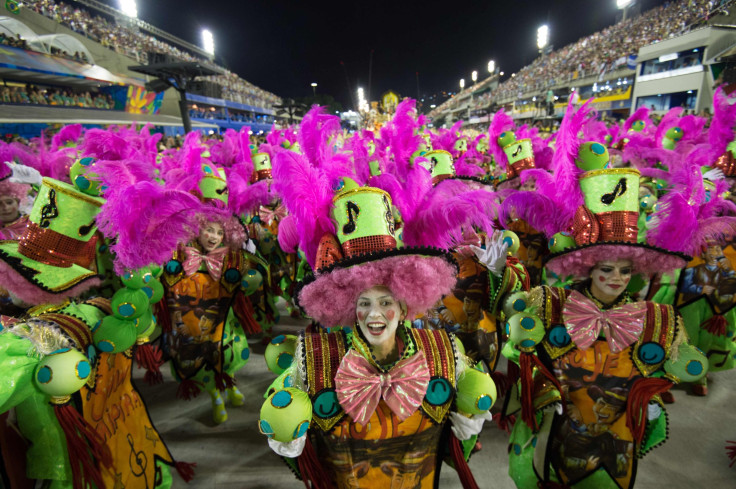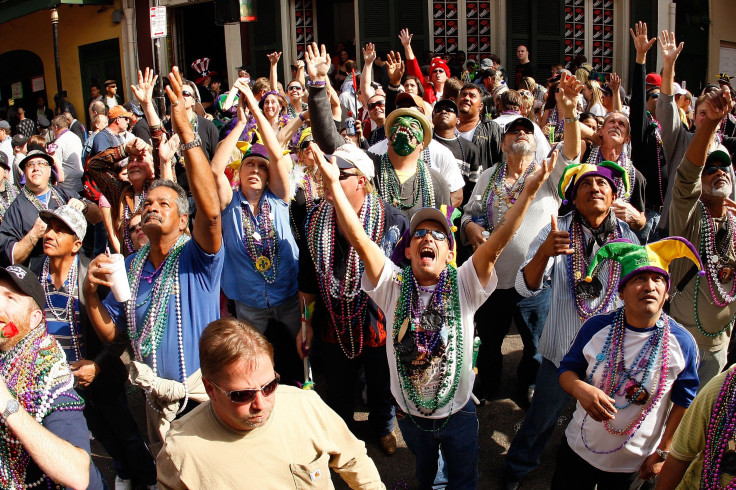What Is Fat Tuesday? Interesting Facts About New Orleans Mardi Gras

Fat Tuesday, which falls on Feb. 13 this year, marks the end of the Mardi Gras festival in New Orleans.
It is the culmination of the week-long festival — the last day for Christians to enjoy all their favorite foods before the start of Lent, which is a 40-day long fast when Christians give up some of the things they most enjoy.
Here are some interesting facts about Fat Tuesday and Mardi Gras:
1. Abstinence from Dairy: According to the Latin roots of Fat Tuesday, the culmination of the carnival means “removal of flesh/meat.” Traditionally, Christians would refrain from consuming any meat or dairy products during the period of Lent that follows this festival, according to Catholic.
2. Mardi Gras is Fat Tuesday in French: The celebration was first recognized by Pope Gregory XIII in 1582 and originally began as a French Christian festival.
3. Fat Tuesday is also known as "Shrove Tuesday": In some countries, the culminating day of the weeks-long festival is also observed as "Shrove Tuesday" after shrive, which means "to confess." Christians often use this day to go to the church to confess their sins before the “Ash Wednesday” so that they can start their spiritual journey of Lent free of guilt.
4. Most famous places where Mardi Gras is celebrated: Although the carnivals at New Orleans, Louisiana, and Rio de Janerio, Brazil, draw the largest number of tourists from across the globe, the festival is immensely popular in Germany (as "Karneval"), Italy (as "Martedi Grasso"), Trinidad (as "J'Ouvert"), and Mexico (as "Martes de Carnaval").
5. Masks and beads worn on Mardi Gras: The king of the first daytime Carnival in 1872 was the first to wear multicolored beads during the parade — a look that became an instant trendsetter. Parade-goers started draping themselves with beads colored purple for justice, gold for power and green for faith.
Masks, on the other hand, had a deeper purpose than just making fashion statements. Participants wore masks during celebrations to fight class distinctions.

6. Campfire came first, parade came later: When Mardi Gras originally began in 1699 in New Orleans, people used to gather around campfires as the earliest form of celebration. The modern-day celebrations started around 1730s, when processions started with slaves carrying flambeaux, or torches.
7. “Krewe” or originally spelt “crew”: A Krewe is a "fanciful spelling of crew” and refers to the different organizations in New Orleans that have been planning parades around the city for decades. The first parade in New Orleans was organized by the Mistick Krewe of Comus, in 1857, USA Today reported.
A Krewe almost became like a royal court, with a king or queen presiding over balls and riding on floats.
8. King cake in Mardi Gras: One of the traditional delicacies linked to Mardi Gras is the king cake — a ring of dough, cinnamon-streaked, filled or plain, and topped with sugar in the traditional colors of the festival. A plastic baby Jesus Christ is placed inside the cake.
The concept of king cake began in the late 19th century, when the Twelfth Night Revelers baked a cake with a bean inside. Everyone received a piece of the cake. Whoever received the piece with the bean inside was crowned the king or the queen of the ball.
© Copyright IBTimes 2024. All rights reserved.






















